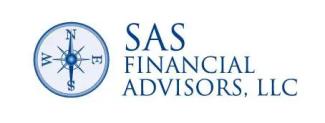May 17th, 2021 Deadline: 2020 IRA and Roth IRA Contributions
2020 Important Tax Update and Retirement Contribution Changed Deadline
Not only did the IRS extend the due date for tax filing to May 17th, 2021, but they have also extended the deadline to contribute to individual retirement accounts (IRAs). CA aligned the due date for state income taxes and tax filings with the extended IRS due date for federal tax filing as well.
The annual $6,000 contribution limit ($7,000 for age 50 and up) can be split between an IRA or a Roth IRA. Combined contributions across all IRA and Roth IRA accounts for an individual, cannot exceed the annual contribution limit. Non-income earning spouses may qualify for Spousal IRA or Spousal Roth IRA contributions.
If you meet the requirements to contribute to an individual IRA or Roth IRA or have questions about a spousal IRA or Roth IRA, contact SAS before May 1st, 2021.
- 2020 IRA Contribution and Deduction Limits Effect of Modified AGI on Deductible Contributions if You are NOT Covered by a Retirement Plan at Work
- 2020 IRA Contribution and Deduction Limits Effect of Modified AGI on Deductible Contributions If You ARE Covered by a Retirement Plan at Work
- Amount of Roth IRA Contributions That You Can Make for 2020
SAS will host a webinar Thursday, April 8th, 2021 at 2 PM Pacific on the "When & How of Retirement Contributions," check your newsletter in your email inbox to sign up.
2021 Retirement Distributions
Remember that Required Minimum Distributions (RMDs) return this year. There is plenty of time to complete RMDs by the deadline on 12/31/2021. Due to changes made by the SECURE Act, if your 70th birthday is July 1, 2019, or later, you do not have to take withdrawals until you reach age 72.
- Each account from the following requires a minimum distribution amount annually equal to the IRS formula:
- Traditional and Rollover IRAs, Inherited IRAs, SEP IRAs, SIMPLE IRAs, 401(k), 403(b) 457(b)s, and Keogh Plans
- Roth IRAs do not have RMDs.
- For clients who’ve completed the TD Ameritrade Institutional “Move Money” form (Section 6), ACH Out banking instructions are on file and allow for the smoothest RMDs to occur.
- Additionally, a default federal tax withholding, usually 10%, and a default state tax withholding, usually 0%, will be applied unless otherwise specified by the client to the advisor team.
- Contact the SAS Team to confirm your banking information on file and tax withholdings for your 2021 RMD.
Fiscal Stimulus
With the American Rescue Plan passed and most Americans receiving their additional $1,400 stimulus check, including eviction relief and family child tax credits, as well as funding for schools, states, and municipalities, the Biden administration is continuing its focus on fiscal stimulus. They will be introducing an infrastructure package and a separate climate change package. Some economists are pointing to the stimulus and saying these have the potential for generational impact.
Biden has a proposal to pay for the next packages highlighting infrastructure and climate. Tax increases proposed during the campaign are being discussed including raising the corporate tax rate to 28% from 21% and a higher marginal tax rate for household incomes above $400,000. Capital gains and qualified dividends will go away with income above $1M. Also discussed is a potential limit on step-up in cost basis for estates. It is questionable whether these new taxes if passed, will pay for the increased federal government spending. Not to mention the blue state Congressmen and Senators among those who are interested in revising the SALT cap, the state and local (including property) tax deduction cap, set at $10,000.00 as part of the Tax Cuts and Jobs Act of 2017.
The Markets
The stock market is not reacting to deficits and debt. Based on analysis by Wall Street with very low-interest rates instituted by the Federal Reserve and with the substantial fiscal stimulus passed by Congress, the historically high valuations of the stock market are justified. Price-earnings ratios that are determined by the cost of money-interest rates-can be higher when interest rates are lower. And deficits, which were over 10% of GDP in 2020, will be rising much higher in 2021.
“Goldilocks markets,” a perfect convergence of market indicators, “not too hot and not too cold,” are created when the Fed is keeping interest rates low. The bad news is interpreted as good news, and the good news is seen as good news. The result is growing asset values. We are in a Goldilocks market now however, asset values saw this coming 6 months ago. Remember what happened to Goldilocks!
This website is informational only and does not constitute investment advice or a solicitation. Investments and investment strategies recommended in this blog may not be suitable for all investors. SAS Financial Advisors, LLC and its members may hold positions in the securities mentioned within this newsletter.

